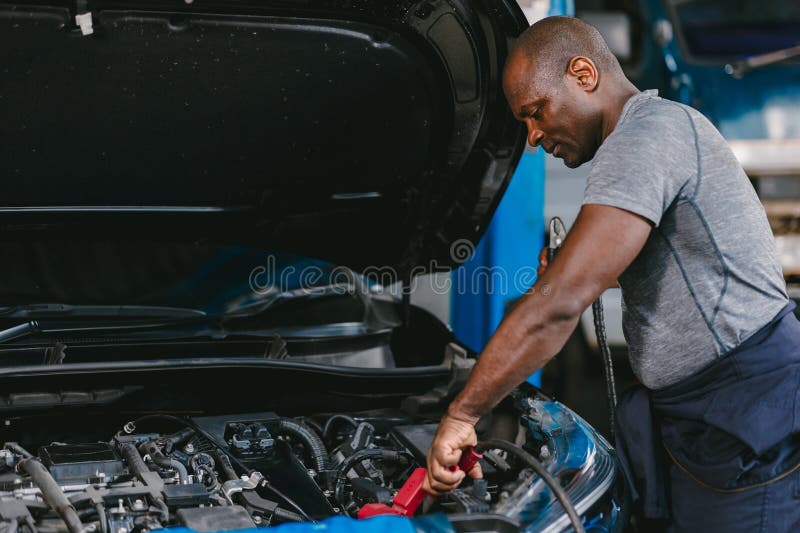All Categories
Featured
When it pertains to vehicle maintenance, tires are frequently neglected, in spite of being an important factor in both security and efficiency. Choosing the right set of tires can make a significant distinction in your driving experience, particularly in terms of handling, fuel effectiveness, and road safety. Understanding just how to select the right tires for your lorry calls for recognizing your driving problems, efficiency needs, and the different tire alternatives offered. Right here's a thorough overview to help you make the best choice.
![]()
All-Season Tires: These are one of the most typical kind, made for a selection of driving problems, consisting of damp and dry roadways. They use a balanced efficiency, making them a great choice for everyday driving in areas with moderate climates.
Summer Season Tires: Perfect for warmer climates, summer season tires provide excellent performance on damp and completely dry roads, supplying superior grip and handling. Nevertheless, they are not suitable for snowy or icy conditions.
Winter Tires: Winter tires are especially made to deal with snow, ice, and freezing temperature levels. Made from an unique rubber compound that remains versatile in winter, they include deep footsteps that grip the road, offering far better control and safety in winter months conditions.
Performance Tires: For those driving cars or searching for improved handling, performance tires offer higher responsiveness, catching capabilities, and boosted grip. These tires focus on efficiency however might give up convenience and longevity.
225: The size of the tire in millimeters. 50: The element ratio, or the height of the sidewall as a portion of the tire's width. R: Radial building and construction, which is one of the most typical style for modern tires. 17: The size of the tire in inches, matching the dimension of the wheel. When changing your tires, it's typically best to match the initial size for your car to keep the intended equilibrium of comfort, safety, and handling. Changing tire sizes can affect performance, consisting of speedometer precision and fuel effectiveness.
![]()
Urban and City Driving: If most of your driving occurs on well-paved city roads, all-season tires are generally the very best alternative. They supply sufficient grasp and comfort in moderate conditions, with a concentrate on performance.
Freeway Driving: For frequent freeway vehicle drivers, tires that provide long-lasting durability and reduced road sound, such as visiting tires, are perfect. These tires provide a smooth adventure and are optimized for fuel efficiency over fars away.
Off-Road Driving: If you drive an SUV or vehicle and often venture off the ruined course, you'll need tires designed for tough terrain. All-terrain or mud-terrain tires use better grip and sturdiness for driving on crushed rock, mud, or unpaved roadways.
Symmetrical Footstep: A lot of all-season tires include a symmetrical tread pattern, which offers a balanced performance for regular driving problems. It's suitable for dry roads, along with moderate damp problems.
Asymmetrical Tread: These tires have different walk patterns on the outdoors and within, boosting cornering and security. They offer a much better hold on both wet and completely dry roadways, making them a preferred choice for efficiency lorries.
Directional Tread: Designed with a V-shaped pattern, these tires stand out at channeling water far from the step. They give better grip in wet and snowy conditions, lowering the danger of hydroplaning.
Examining Tire Pressure: Underinflated tires can adversely affect dealing with and gas effectiveness, while overinflated tires can boost the danger of blowouts. Check the tire pressure regularly and ensure it fulfills the manufacturer's specifications.
Tire Rotation: To make sure also put on, tires should be turned every 6,000 to 8,000 miles. Uneven wear can trigger early tire failure and affect your vehicle's alignment and handling.
![]()
Wheel Alignment: Imbalance can cause your tires to wear unevenly and negatively impact your automobile's handling. Have your car's placement examined regularly, specifically if you observe pulling to one side.
Final thought. Whether you require all-season tires for day-to-day driving, winter months tires for snowy conditions, or performance tires for better handling, recognizing your needs is vital to making the best choice. Regular tire maintenance is likewise important for maintaining your tires in optimal problem.

- Recognizing Tire Types. The primary step in picking the appropriate tire is comprehending the various types and their functions. Each type of tire is engineered for particular conditions, so understanding which one fits your needs is important.
All-Season Tires: These are one of the most typical kind, made for a selection of driving problems, consisting of damp and dry roadways. They use a balanced efficiency, making them a great choice for everyday driving in areas with moderate climates.
Summer Season Tires: Perfect for warmer climates, summer season tires provide excellent performance on damp and completely dry roads, supplying superior grip and handling. Nevertheless, they are not suitable for snowy or icy conditions.
Winter Tires: Winter tires are especially made to deal with snow, ice, and freezing temperature levels. Made from an unique rubber compound that remains versatile in winter, they include deep footsteps that grip the road, offering far better control and safety in winter months conditions.
Performance Tires: For those driving cars or searching for improved handling, performance tires offer higher responsiveness, catching capabilities, and boosted grip. These tires focus on efficiency however might give up convenience and longevity.
- Tire Size Matters. When picking new tires, tire size is one of the most important variables to take into consideration. Tire size is suggested by a series of numbers printed on the sidewall, such as "225/50R17." Below's just how to review them:
225: The size of the tire in millimeters. 50: The element ratio, or the height of the sidewall as a portion of the tire's width. R: Radial building and construction, which is one of the most typical style for modern tires. 17: The size of the tire in inches, matching the dimension of the wheel. When changing your tires, it's typically best to match the initial size for your car to keep the intended equilibrium of comfort, safety, and handling. Changing tire sizes can affect performance, consisting of speedometer precision and fuel effectiveness.
- Driving Conditions and Tire Efficiency. Where you drive and just how you drive plays a considerable role in figuring out the right tire for your lorry. Right here's what to consider based upon your driving behaviors:

Urban and City Driving: If most of your driving occurs on well-paved city roads, all-season tires are generally the very best alternative. They supply sufficient grasp and comfort in moderate conditions, with a concentrate on performance.
Freeway Driving: For frequent freeway vehicle drivers, tires that provide long-lasting durability and reduced road sound, such as visiting tires, are perfect. These tires provide a smooth adventure and are optimized for fuel efficiency over fars away.
Off-Road Driving: If you drive an SUV or vehicle and often venture off the ruined course, you'll need tires designed for tough terrain. All-terrain or mud-terrain tires use better grip and sturdiness for driving on crushed rock, mud, or unpaved roadways.
- Tire Tread Patterns. Tire tread patterns affect just how your vehicle grasps the roadway, specifically in wet or unsafe conditions. Comprehending step style is key to guaranteeing secure handling:
Symmetrical Footstep: A lot of all-season tires include a symmetrical tread pattern, which offers a balanced performance for regular driving problems. It's suitable for dry roads, along with moderate damp problems.
Asymmetrical Tread: These tires have different walk patterns on the outdoors and within, boosting cornering and security. They offer a much better hold on both wet and completely dry roadways, making them a preferred choice for efficiency lorries.
Directional Tread: Designed with a V-shaped pattern, these tires stand out at channeling water far from the step. They give better grip in wet and snowy conditions, lowering the danger of hydroplaning.
- Tire Maintenance for Long Life. Once you've selected the right tires, it's vital to maintain them correctly to expand their life-span and make certain continued performance. Routine tire upkeep includes:
Examining Tire Pressure: Underinflated tires can adversely affect dealing with and gas effectiveness, while overinflated tires can boost the danger of blowouts. Check the tire pressure regularly and ensure it fulfills the manufacturer's specifications.
Tire Rotation: To make sure also put on, tires should be turned every 6,000 to 8,000 miles. Uneven wear can trigger early tire failure and affect your vehicle's alignment and handling.

Wheel Alignment: Imbalance can cause your tires to wear unevenly and negatively impact your automobile's handling. Have your car's placement examined regularly, specifically if you observe pulling to one side.
- Talk to an Expert. While you may have a basic understanding of the kinds of tires readily available, it's constantly an excellent idea to consult with a tire expert. They can give skilled recommendations based on your particular car model, driving conditions, and efficiency needs.
Final thought. Whether you require all-season tires for day-to-day driving, winter months tires for snowy conditions, or performance tires for better handling, recognizing your needs is vital to making the best choice. Regular tire maintenance is likewise important for maintaining your tires in optimal problem.
Latest Posts
Auto Repair Services: Comprehensive Vehicle Maintenance & Repair Solutions !
Published Apr 21, 25
2 min read
Affordable Luxury: Discover the Advantages of Laminate Floor Covering
Published Apr 20, 25
1 min read
Score Major Discounts with Montclare Auto Repair Offers - Act Fast!
Published Apr 20, 25
2 min read
More
Latest Posts
Auto Repair Services: Comprehensive Vehicle Maintenance & Repair Solutions !
Published Apr 21, 25
2 min read
Affordable Luxury: Discover the Advantages of Laminate Floor Covering
Published Apr 20, 25
1 min read
Score Major Discounts with Montclare Auto Repair Offers - Act Fast!
Published Apr 20, 25
2 min read